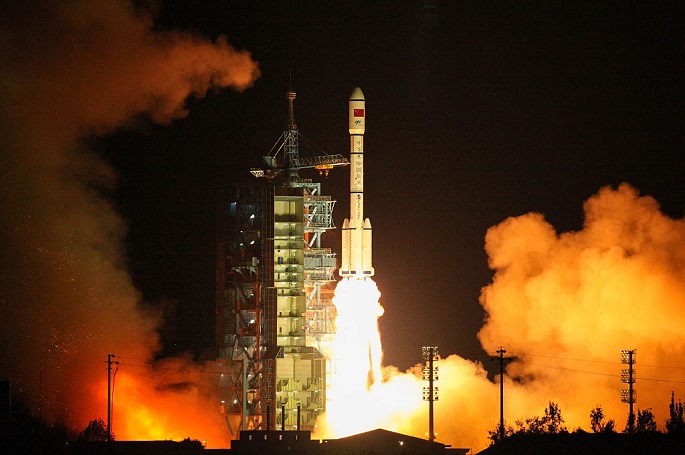When it comes to pursuing greater heights, it seems that for China, the sky’s not the limit.
As the country progressively endeavors to complete a fully operational manned space station by sometime around 2022, it launched Tiangong-2--its second space laboratory--at the Jiuquan Satellite Launch Center in Jiuquan, Gansu Province, on Thursday, reported China Daily.
The 10.4-meter high space lab weighs 8.6 metric tons and measures 3.35 meters in diameter. A Long March 7 rocket carried it into space.
Equipped with two cabins, one serves as the living quarters of the astronauts. The other one keeps the engines, propellant, storage batteries and solar panels.
Wu Ping, the deputy director of China Manned Space Agency (CMSA), underscored the significance of Tiangong-2 during a press conference held at the said spaceport on the eve of its launch.
“Launching Tiangong-2 is a key battle in comprehensively completing the space laboratory stage mission,” said Wu, as quoted by Reuters.
She added that it “will establish a firm foundation” for that mission.
This second space lab--China launched Tiangong-1 on Sept. 2011--seeks to gather new findings relating to space science, life support technologies and space medicines through experiments, according to China Daily.
It will likewise conduct an in-orbit refueling test.
Tiangong-2 carries 14 pieces of equipment to be used for the tests and experiments, including a high-sensitive gamma-ray burst detector.
A first of its kind, according to Wu, some of the country’s engineers developed it together with other engineers from the Paris-based European Space Agency.
According to a document titled “China Manned Space Programme: Its Achievements and Future Developments,” prepared by Wu for the 59th Session of the Committee on the Peaceful Uses of Outer Space (COPUOS) held in Vienna, Austria, in June, the Chinese government employs a “three-step strategy” for its space station project.
The first step: “To launch manned spaceships to master basic human space technologies.”
The second one: “To launch Space Labs to make technological breakthrough in EVA [extravehicular activity], R&D [research and technology], and accommodation of long-term man-tended utilization on a modest scale.”
Third: “To construct China’s Space Station to accommodate long-term man-tended utilization on a large scale.”
The United Nations Office for Outer Space Affairs posted on its website in June that it would join forces with CMSA “to develop the space capabilities of United Nations Member States via opportunities on-board China’s future space station.”
Italian astrophysicist Simonetta Di Pippo, the director of UNOOSA, said that she and her office “are looking forward to working with CMSA.”






















